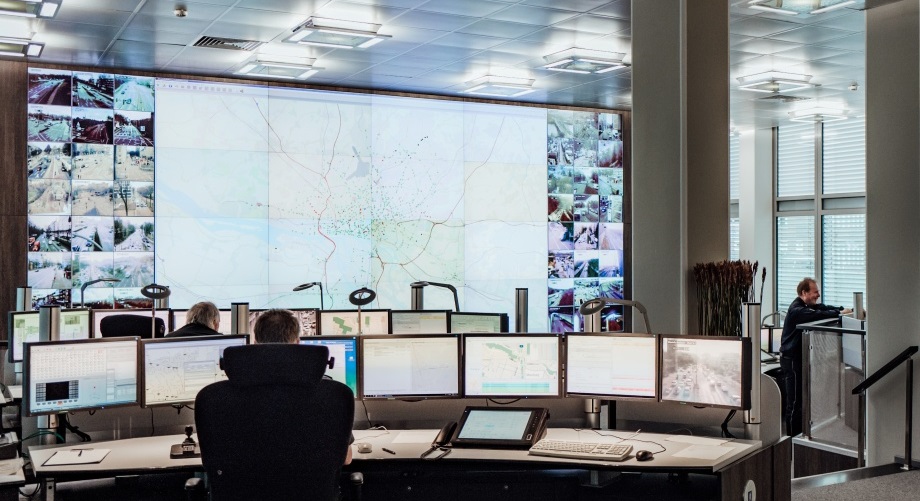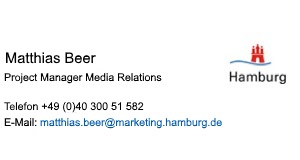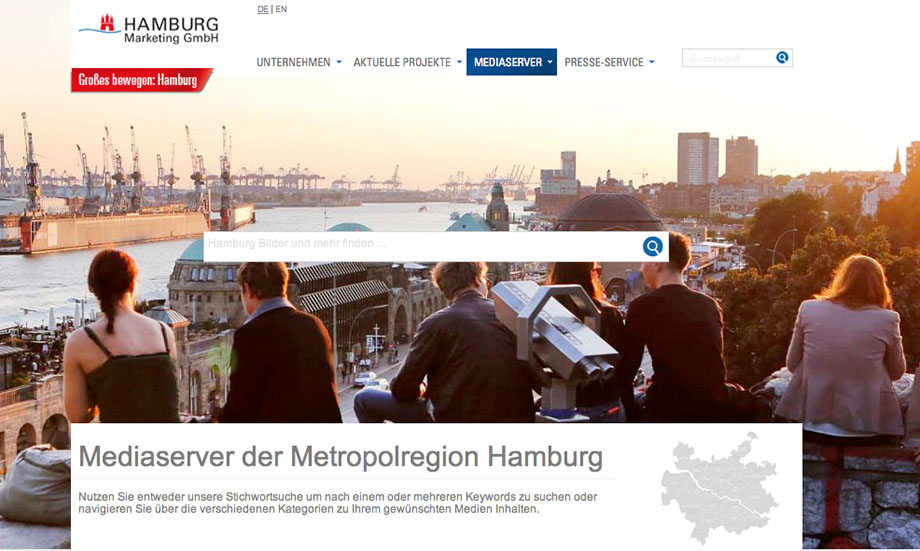Mobility Lighthouse Projects

With 1.8 million inhabitants, Hamburg is Germany’s second largest city. The City of Hamburg is promoting state-of-the-art technologies with the aim of becoming a showroom for innovative mobility. Digital technology plays a key role in making urban mobility and logistics in Hamburg safer, more efficient, and more eco-friendly. Therefore, Hamburg’s ITS strategy is targeted at traffic safety, traffic flows, environmental effects, and the promotion of innovations. These topics are pursued in six focal areas: data & information; intelligent traffic control & routing; intelligent infrastructure (maintenance & operation); intelligent parking; mobility as a service; and automated & connected driving.
HEAT (Hamburg Electric Autonomous Transportation
HEAT (Hamburg Electric Autonomous Transportation) will examine the integration of autonomous shuttles in real traffic. The vehicles will travel at speeds of up to 25 km/h. The first phase will start in 2019 on a fixed route with a test run without passengers and with a professional vehicle attendant. In the following phase, passengers will be taken aboard and with an attendant. The overall goal is to prove that autonomous minibuses can be used in public transport. Entirely autonomous is scheduled for the ITS World Congress in Hamburg in 2021.
- Research and development project in the HafenCity Hamburg
- Construction of a total 3.9 km long round course for an e-minibus of public transport at a speed of up to 25 km/h
- Step-by-step procedure: start test 2019, Goal: Fully autonomous operation until 2021
- Partner: Hamburger Hochbahn AG (Project Management), IAV GmbH, Siemens Mobility GmbH, HySolutions GmbH, DLR German Center for Aerospace, IKEM
- Funding by the Federal Ministry for Environment, natural reserve and nuclear safety
Inner City Test Track
From now on until 2020, a new test track for automated driving of about 9 kilometers will be equipped in Hamburg for infrastructure-to-vehicle (I2V) and vehicle-to-infrastructure (V2I) communication. Contrary to most of the other test routes in Germany, the test track runs on heavily loaded city and district streets in the city center of Hamburg. As a result, complex framework conditions exist such as a high percentage of mixed traffic also the environmental conditions for transmission technologies are challenging through metro and city train overpass at intersections, high-rise buildings or tree-lined roads.
The test track is an open platform for vehicle manufacturers, technology companies, and research institutions to trial innovative mobility services in real traffic conditions on public roads. It can be used for developing and testing automated driving functions, supporting assistant systems and innovative mobility concepts in an urban area.
Since April 2019 the Volkswagen Group Research is testing automated vehicles in urban traffic in Hamburg. This is the first time Volkswagen has begun to test automated driving to Level 4 at real driving conditions in a major German city. From now, a fleet of five e-Golf, equipped with laser scanners, cameras, ultrasonic sensors and radars, will drive on a three-kilometer section of the digital test bed for automated and connected driving Vendor-independent and open-user testing of a real-time operation of automated and networked vehicles.
- Objective: To increase traffic safety and traffic efficiency for all participants
- Equipment of 37 traffic lights with V2X technology until 2020
- Office coordinates operation and inquiries
- Funded by the Federal Ministry of Transport and Digital Infrastructure
Hamburg Takes Pole Position with On-Demand-Shuttles
With the start of new trail-blazing mobility services Hamburg is assuming the leading position in eco-friendly ride pooling on the European continent. Various shared mobility services – such as MOIA, CleverShuttle, ioki and mytaximatch – Hamburg is one of Europe’s most innovative cities when it comes to ride sharing or ride pooling. What these services have in common is the fact that journeys are booked via an app and can be combined with each other. Shared mobility helps maximise the use of vehicles to their full capacity, while alleviating traffic and protecting the environment.
MOIA: The mobility startup is part of the Volkswagen Group, which has developed a new electric vehicle specifically for this purpose. While MOIA started its service in April 2019 with 100 vehicles initially, the fleet is scheduled to grow to 500 vehicles by the end of the year. The new mobility service is based on the concept of shared journeys and is shaped by innovative technology. Users can book a shuttle bus via an app, specifying the start and destination of their intended journey. An algorithm then bundles the trip with similar routes of other users and calculates individual prices depending on the length of the route. www.moia.io
CleverShuttle calls itself “the greenest shuttle in the world” and already since 2017 in operation. The on-demand service is based on the sharing philosophy and pools passengers with similar routes. The service uses only electric and hydrogen vehicles as well as plug-in hybrids. Currently it is also one of the most affordable transportation services in Germany. With a growing number of vehicles CleverShuttle operates Europe’s largest hydrogen fleet for individual public transportation. https://www.clevershuttle.de/en/company
ioki: Since summer 2018, Ioki, Deutsche Bahn’s business unit for intelligent on-demand mobility and the public transport provider VHH, offer a new public on-demand shuttle service in two outer quarters of Hamburg. Passengers on similar routes are automatically allocated to car pools and transported together. The ride sharing concept can be booked via an app at the HVV rate. With a combination of regular and additional bus stops ioki can pick up passengers within a radius of 200 metres in the districts. The electric vehicles are emission-free and manufactured by the Britain’s LEVC. They offer space for up to six passengers and are also barrier-free. Customers can book the shuttle service on an app. www.ioki.com/en/
mytaxi match: Hamburg also offers opportunities to share a taxi ride. Launched about two years ago, the app of Hamburg-based market leader mytaxi enables customers to share their trips with other people using the mytaximatch feature. A new pricing model, developed by Hamburg’s taxi companies in liaison with the City of Hamburg, provides passengers with maximum transparency: prior to booking a trip, the app calculates a fixed price, i.e. the taximeter will be switched off. The company was launched in 2009 as a startup featuring Europe's very first taxi app.www.mytaxi.com
Urban Air Mobility
Hamburg is an official demonstrator region of the European Union for the implementation of civilian usage of drone and other urban air mobility technologies, addressing existing and new mobility needs in view of improving the life of its citizens. In close cooperation with industry, universities, authorities and the public, feasibility studies for the systematic deployment of air mobility solutions in Hamburg’s urban areas will be developed. Targeted solutions will explore, for example, the time-sensitive transport of medical goods or the inspection and maintenance of large infrastructure facilities such as port bridges and wind turbines. In addition, flying taxis will be tested in Hamburg in the near future.
Port of Hamburg as test field for future logistic solutions
Connected vessels, bridges, railway infrastructure and many more – the port of Hamburg is one of the busiest in the world and is constantly working on connected and intelligent services for smooth traffic-flow on water, streets and railways. To connect an increasing number of vehicles, infrastructure and production processes the next communication standard 5G is essential. Already now, Hamburg Port Authority, Nokia and Deutsche Telekom are testing the 5G standard in the Port of Hamburg.
Terminal operator HHLA is working on the development of a high-speed container transport tube – the Hyperloop. HHLA and Hyperloop Transportation Technologies have set up a joint venture to transport containers at speeds of up to 1,000 km/h through a tube to and from the Port of Hamburg. It aims to develop and market a hyperloop transport system for sea containers. An initial plan foresees setting up a transfer station for test purposes at a Hamburg HHLA terminal and developing a transport capsule for standard sea containers
The HHLA and the Fraunhofer Center for Maritime Logistics are mulling the use of drones to transport containers through the skies over the Port of Hamburg. Large drones can already carry loads of up to two tons. HHLA had examined the technicalities with the Fraunhofer Center in Hamburg-Harburg. The economic feasibility will be assessed in the next step.
Hamburg TruckPilot
As part of the transport partnership between Volkswagen AG and the City of Hamburg, MAN Truck & Bus and Hamburger Hafen und Logistik AG (HHLA) will be testing automated and autonomous trucks in real use over the coming years. The testing phase is planned to run from from 2019 until June 2020. At the HHLA Container Terminal Altenwerder (CTA) in the port of Hamburg and a 70-kilometre stretch of the A7 motorway are to serve as the field testing environment. The goal of the partnership between MAN and HHLA is to analyse and validate the exact requirements for customer-specific deployment in a real-world setting and the integration of autonomously driven trucks into the fully automatic container handling process. Initially, the project framework envisages two prototype trucks equipped with the necessary electronic automation systems. They will enter the A7 motorway at the Soltau-Ost junction fully automated, then autonomously handle unloading and loading within the Altenwerder container terminal. The project is divided into three phases. In the preparatory phase, which has already been started and is scheduled to be completed by the end of 2018, the technical framework conditions will be defined.
SwitcHH
Hamburg has developed a unique mobility concept to fully benefit from the various means of transport that is found nowhere else in Germany: Switchh is an app that helps users when selecting the best mode of transport while out and about.
- "SwitcHH points": bundled sharing offers at train stations and in residential areas
- up to 60 locations by 2019
- car2go, DriveNow, cambio, Emmy and StadtRAD offer a network of 1,500 vehicles and 2,500 bicycles
- Integration of electric charging stations
- Price discounts because of a membership
- Integrated in the App of the Hamburg Transport Association
Autonomous Parking – SynCoPark at Elbphilharmonie
As part of the ‘SynCoPark’ project, valet parking will be available at the Elbphilharmonie concert hall’s parking lot. Not just any valet parking, however. Everything between drop off and pick up will be automated. The first tests in the 435-space Elbphilharmonie parking garage are expected to begin in the second half of 2020.
The joint project ‘SynCoPark’ aims to develop standards for the qualification and certification of digital infrastructure in parking garages and in vehicles. The project’s goal is not only to create new state-of-the-art automated car parks, but also to retrofit existing parking garages to offer automated parking operations there as well.
Digital and connected parking
In 2018 Deutsche Telekom started installing sensors on parking spaces in downtown Hamburg. Using innovative wireless technology, the sensors provide information on free parking spaces. Through the end of 2019 up to 11,000 connected parking sensors shall be installed in the entire Hamburg downtown area. To provide a high-quality prediction, the parking sensors send information on parking space occupancy via narrowband radio technology, the so-called Narrowband Internet of Things network. The information from the parking sensors should be incorporated into a parking app system before the end of this summer, making it even easier and more accurate to find a free parking space. Sensors for NB-IoT use minimal amounts of power yet have a long range.
- Objective: Real-time detection of parking space utilization
- Start installation of parking sensors in the city T-Systems from Q4 / 2018
- Time saving and comfort increase for the road users
- Less parking search traffic and more traffic safety
- Optimization of traffic control and the park space management
Green4Transport: Smart interaction of vehicles and traffic lights
To test smart networking of vehicles and dynamically controlled traffic lights, Green4transPORT is implemented in the Port of Hamburg. The project promotes a new generation of vehicles that are not only able to communicate with other vehicles but also with the rest of the traffic infrastructure. Communication takes place via a Wi-Fi standard called Vehicle-to-X (V2X), especially adapted for road traffic. Thus, defined and spatially limited real-time communication can be realized, which is not vulnerable to outside attacks and offers the highest level of data protection. Technology supplier is the Hamburg branch of NXP Semiconductors. The Hamburg based company is well known as the world’s largest chip supplier in the automotive industry and supplies numerous microchips that can be found in almost every vehicle. For Green4transPORT, NXP develops the modem for communication, security systems for protection against hacker attacks and software. Further project partners are the Hamburg Port Authority, Siemens, Technolution, Hamburg Verkehrsanlagen and SCANIA.
- Intelligent communication from vehicle to infrastructure as well as between individual vehicles
- Efficient and safe traffic flow of road freight transport in the port
- Adaptive control through linked traffic lights and driver guidance systems in the vehicle
- Reduction of emissions and immissions by avoiding breaks in traffic
- Project partners: Hamburg Port Authority (AöR), Scania CV AB, NXP Semiconductors Germany GmbH, Siemens Mobility GmbH, Technolution B.V.
Traffic Light Forecast
In the pilot project "Traffic Light Forecast" (TLF), the LSBG and its partners Swarco Traffic Systems and HERE have successfully tested with Audi a high-performance and high-quality traffic light forecasting service. Green time forecasts are to be possible in the future for more than 1,000 traffic lights in the city.
- Provision of traffic data for the development of forecasting apps
- Suitable for vehicles, pedestrians and cyclists
- Pilot project with 60 traffic lights completed in the summer of 2018
- Project partners: Audi, HERE and Swarco
- expand the project on 1,000 traffic lights planned in the city area



